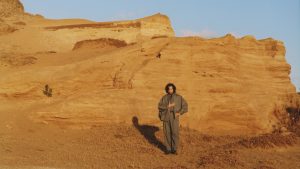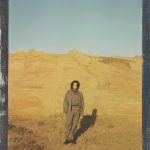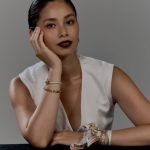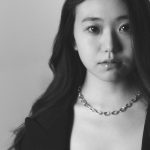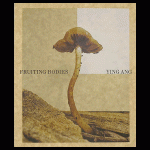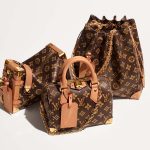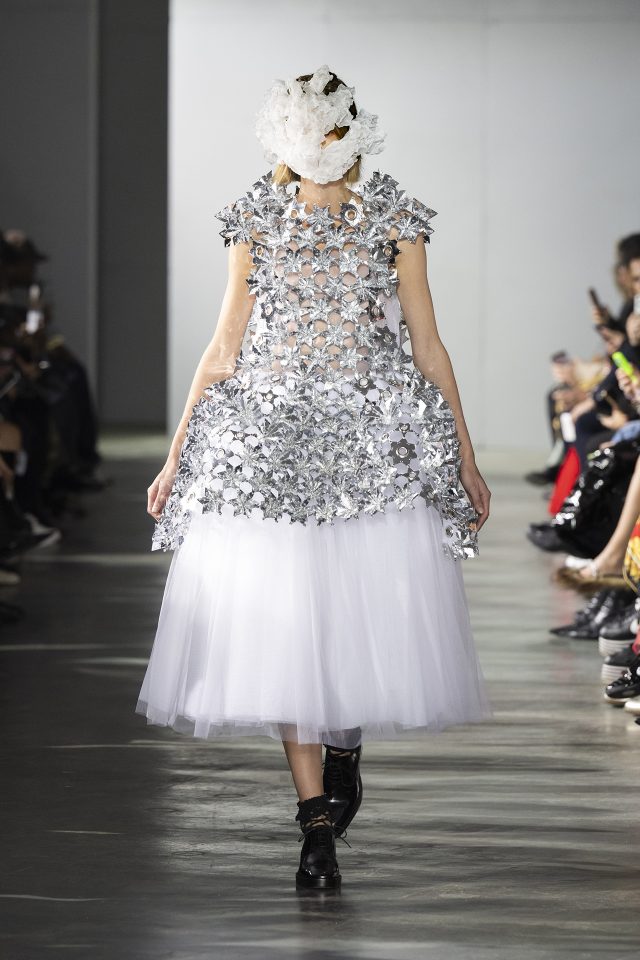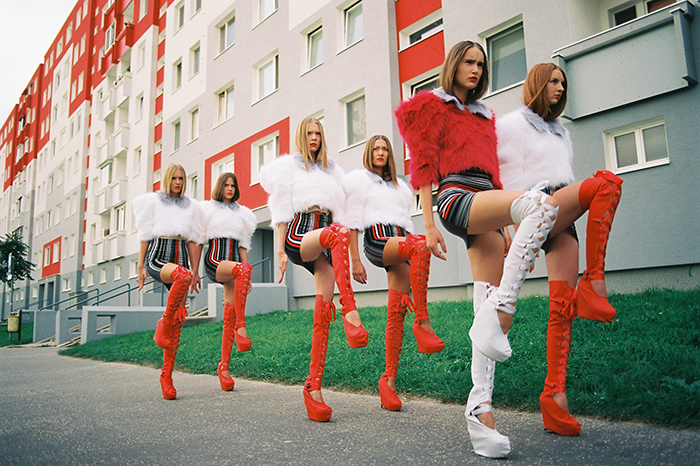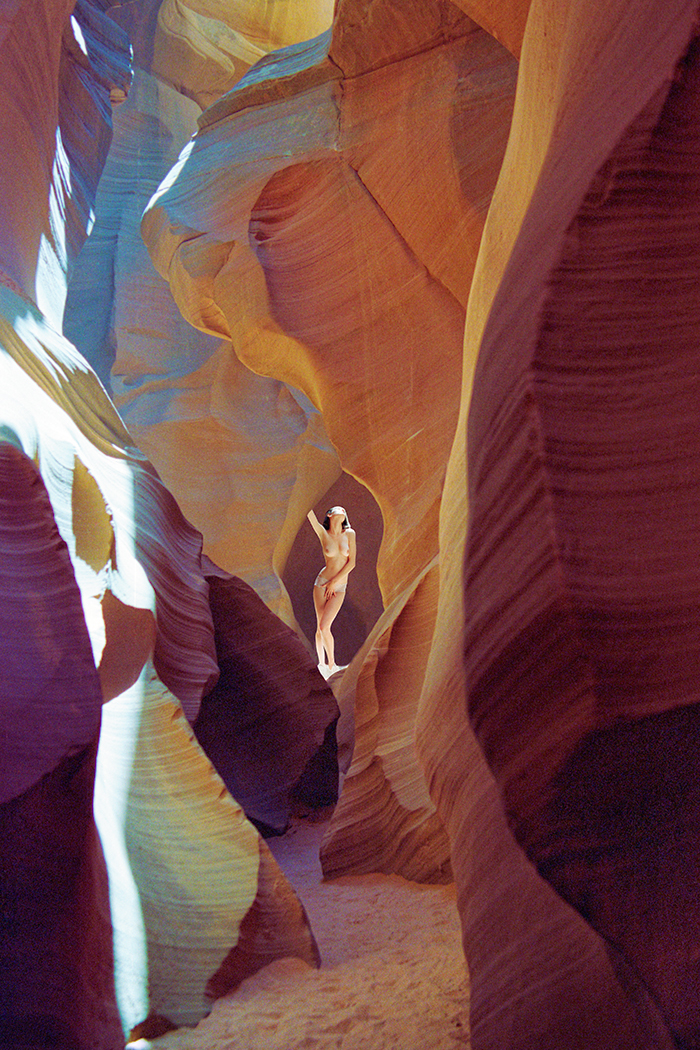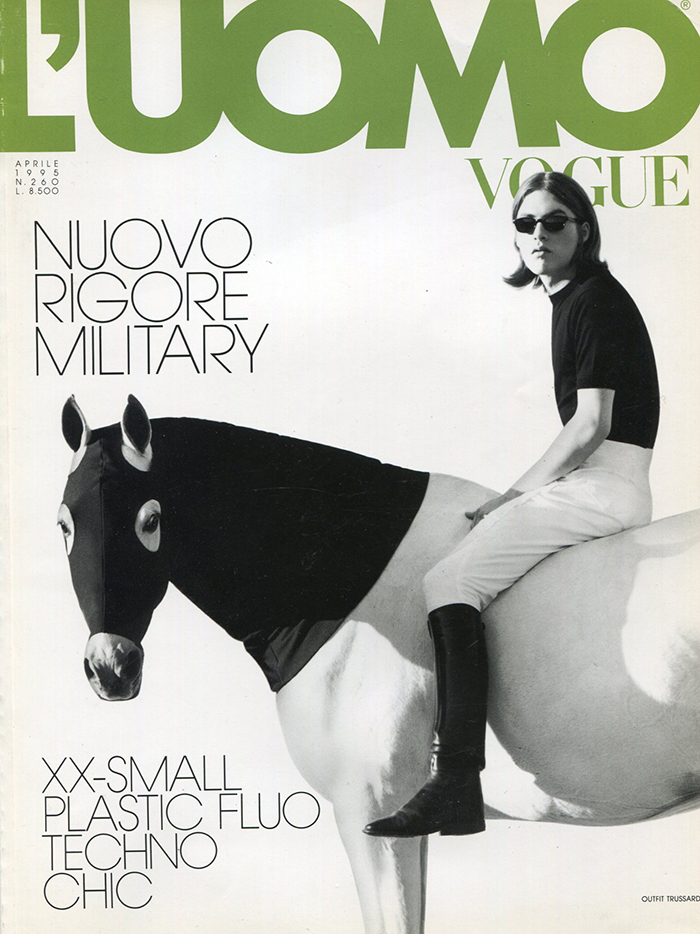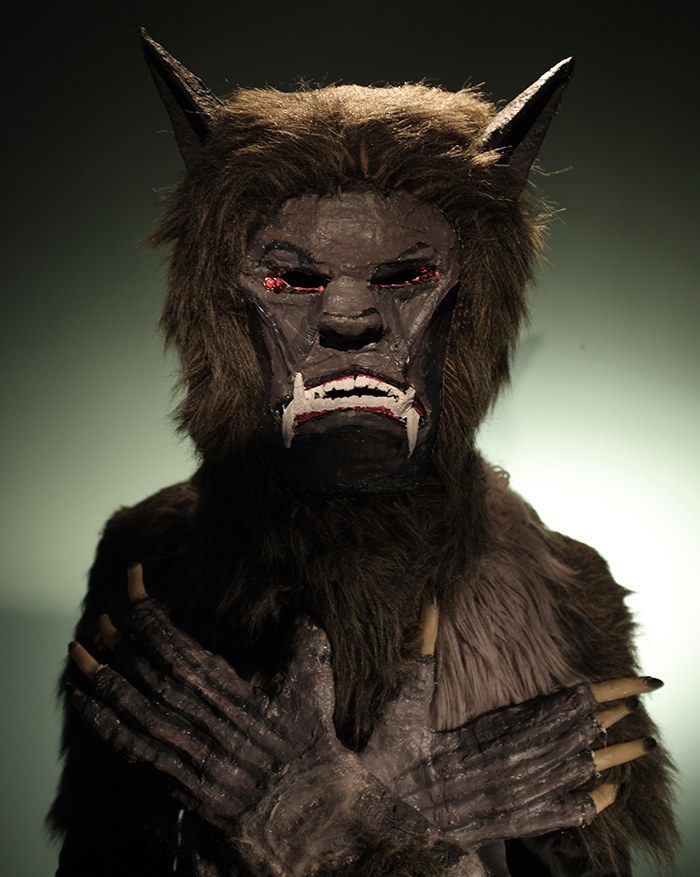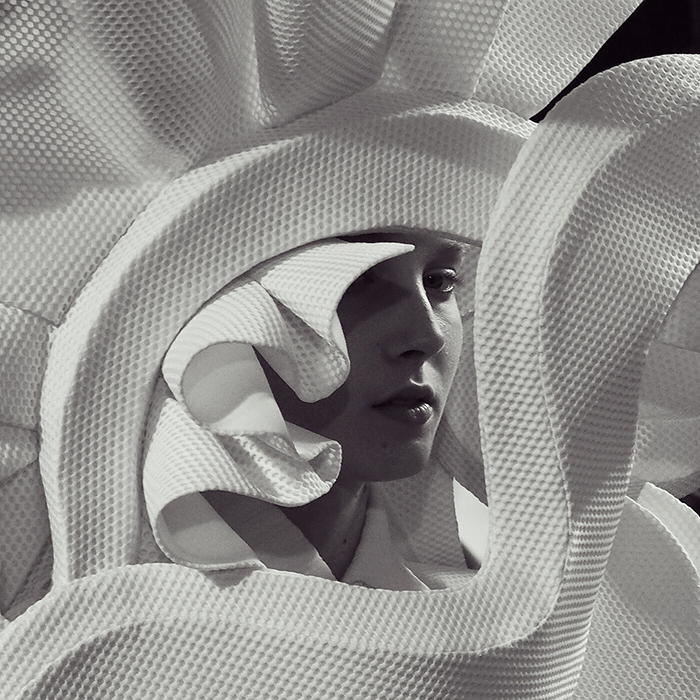世界的フォトグラファーたちの仕掛け人、Katy Barker (ケイティ・ベーカー) インタビュー
Katy Barker
ロンドンを拠点に80年代から数々のクリエイターを発掘/輩出し、エージェントを運営してきた Katy Barker (ケイティー・ベーカー)。今や世界的フォトグラファーである Terry Richardson (テリー・リチャードソン) や Craig McDean (クレイグ・マックディーン) といった人材を新人の頃から支えてきた存在としても広く知られている。彼女はある時、業界から退くことを決意。しかし、その後も彼女の活動を惜しむ声は途絶えることなく、昨年、満を持してファッション業界へと舞い戻ってきた。新たなエージェントを立ち上げ、多くのクリエイターを率いて邁進する Katy Barker は今、どういった考えのもと仕事に取り組んでいるのだろうか。インタビューと共に、所属アーティストたちの最新作、さらに Katy が選んだ彼らのベストワークを紹介する。
世界的フォトグラファーたちの仕掛け人、Katy Barker (ケイティ・ベーカー) インタビュー
Portraits
(The original text in English follows afterwards)
ロンドンを拠点に80年代から数々のクリエイターを発掘/輩出し、エージェントを運営してきた Katy Barker (ケイティー・ベーカー)。今や世界的フォトグラファーである Terry Richardson (テリー・リチャードソン) や Craig McDean (クレイグ・マックディーン) といった人材を新人の頃から支えてきた存在としても広く知られている。彼女はある時、業界から退くことを決意。しかし、その後も彼女の活動を惜しむ声は途絶えることなく、昨年、満を持してファッション業界へと舞い戻ってきた。新たなエージェントを立ち上げ、多くのクリエイターを率いて邁進する Katy Barker は今、どういった考えのもと仕事に取り組んでいるのだろうか。インタビューと共に、所属アーティストたちの最新作、さらに Katy が選んだ彼らのベストワークを紹介する。
— まず、前身となるエージェンシーについて教えてください。
最初のエージェンシーは1985年にロンドンで設立し、当初は『The World of Interiors (ザ ワールド オブ インテリアズ)』という雑誌でキャリアを築いていった新進気鋭の写真家、Bill Batten (ビル・バトゥン) と共にスタートしました。当時はロンドンで不動産が高騰し、市場が非常に潤っていた時期だったため、同誌はその波に乗って最も人気のあるインテリア雑誌になりましたね。私は、自らの直感とわずかな資金のみでやみくもにこの業界に足を踏み入れ、自分の見解をヴィジュアル的に伝えていこうと決意したのです。Bill の成功と共にエージェンシーも急速に成長し、ソーホーにあったプラスチックの机と椅子のみの小さなオフィスには、クライアントと新進アー ティストからの電話が鳴り響いていましたね。 市場の変化に伴い、私はファッションやポートレート写真の業界へと移る決意をしました。そして、自分が満足でき、現代的でファッション業界の感覚を捉え、人々から必要とされるようなアーティストとの仕事を選んでいきましたね。初期の頃は、Levi’s (リーバイス) や KATHARINE HAMNETT (キャサリン ハムネット) といった UK ブランドから仕事をもらい、Terry Richardson (テリー・リチャードソン) と撮影を行っていきました。Terry の写真は挑発的で、他の多くのクライアントにとっては難しい部分もありましたが、人々が関わりたいと思うようなストーリーを伝えられるイメージメーカーへと急速に成長していきましたね。Terry はみんなから愛され、その性格やユーモアは多くの人から共感を得ていました。 その後、私の抱えるアーティストが手がけた『The Face (ザ フェイス) 』や『i-D』の作品がヨーロッパやアメリカの有名なアートディレクターたちの目に留まり、私はポートフォリオを携えてあちこち飛び回りながら機会を探っていました。
Craig McDean (クレイグ・マックディーン) は間もなく『Allure (アリュール)』から仕事の依頼を受け、私は『Harper’s Bazaar (ハーパーズ バザー)』へ売り込みに行きました。その後、Dennis Freedman (デニス・フリードマン) から連絡をもらい、彼が『WWD』から移って新たに立ち上げた雑誌『W』の表紙を Craig に依頼できないかという連絡を受け、人生の転機が訪れました。私はすぐさま Dennis に会いに行き、「青いセーターを纏った Amber Valetta (アンバー・バレッタ) を撮影してみないか」という提案を受けたのです。『W』が発行されてからは、オフィスの電話が鳴りっぱなしでしたね。彼らと共にこの世界に足を踏み入れ、すぐに Fabian Baron (ファビアン・バロン) や Doug Lloyd (ダグ・ロイド)、Marc Ascoli (マーク・アスコリ)、そして Liz Tilberis (リズ・ティルベリス) といった一流クリエイターたちとの仕事で、私のスケジュールはぎっしりと埋まっていったのです。当初は、Terry Richardson、Nathaniel Goldberg (ナサニエル・ゴールドバーグ) 、Cater Smith (カーター・スミス)、Tom Munro (トム・ムンロー)、Guido Mocafico (グイド・モカフィコ) をはじめとした多くの才能を育てて基盤を作っていきましたね。
— Terry Richardson や Craig McDean といったアーティストたちの才能をどのように見抜き、関係を築いていったのですか?
Terry Richardson や Craig McDeanも含め、多くの素晴らしい作家たちと共に仕事ができたことは光栄ですし、その選択をしたのは同じような理由からでした。当時、Terry も Craig も業界ではまだ新人だったため、エディトリアルとコマーシャル、両方のクライアントに対して強力な信頼関係を築いていきました。また、彼らの作品を紹介するための適切なプラットフォームを探し求め、競争の激しいファッション業界でうまく売り出せるように、正しい文脈の中で彼らの価値を作るが私の仕事でしたね。
<Katy Barker が選んだ所属アーティストのベストワーク>
— 現在のエージェンシー Katy Barker Ltd. を設立した経緯を教えてください。
数年の間、業界を退いていたのですが、その時にデカプリストの乱が起きた時代の素晴らしいロシア小説に魅了され、『The Duchess (ザ ダッチェス)』や『Philomela (ピロメーラー)』などの傑出した作品を手掛けた映画プロデューサー、Gaby Tana (ガブリエル・タナ) と共にこの本を映画化する権利を購入しました。しかしながら、長年培ったクライアントやクリエイターとの関係もありましたし、依然として業界とのつながりが残っていたため、たびたび復帰を願う声が上がっていました。むしろ多くの友人たちは、優れたアーティストを発掘するという私とする得意な仕事に戻るべきだと言ってくれていたのです。そのため、復帰を決意することにしました。その時はまだ小説の映画化にも携わっていたのですが、Gaby にそのバトンを渡し、現在はエージェンシーの第2ステージにフォーカスを当て、優れた才能の発掘に専念しています。
— あなたのエージェンシーには、写真家をはじめ、映像作家、スタイリスト、プロップアーティスト、アートディレクターなどさまざまなクリエイターが所属していますが、その選定基準を教えて下さい。
才能というのは、型やカテゴリーにはまるものではないと思っています。個人的にはある一定のスタイルを探し求めているのではなく、直感に従うことの方が多いですね。私が探しているのは、正真正銘の本物でありながら、刺激的な才能です。それは映像や写真、もしくは全く違う何かの場合もあるのですが、作家の作品を初めて目にした時の有機的で感情的な反応に基づいて選定していますね。
— その独自の直感力や審美眼はどのようにして養われたと思いますか?
答えにくい質問ですね!恐らく私は特別な資質に恵まれているのだと思います…。こうしてチームを監督することができているのは審美的な選択において、作品に対する本能的な直感やシンプルで感覚的な反応に頼ることで、自分の素早い反応を信じているからでしょう。そして、作品を見る際にはプランを念頭に入れず、常に「これは本物なのか?」と自分自身に問いかけています。ポートフォリオや映像を見終わった後は、たった今見たばかりの作品を気にかける必要もあります。審美的な見解を築くためには、何より自分のクリエイティヴな考えに対して忠実であることですね。
— 現在のファッション業界で働くフォトグラファーにとって、必要不可欠な要素とは何だと思いますか?
膨大なネットワークを乗り越えていくためにも自分のヴィジョンに忠実であり、インスピレーショナルであり続けることが、不可欠な要素なのではないでしょうか。特に駆け出しのアーティストには、真の才能が必要だと思います。彼らがヴィジョンに忠実であるためには、(先人たちや旬なアーティストたちへの敬服は抜きにして) 他のアーティストの作品を調査して張り合ったり、比較するべきではないですし、それぞれの道に自信を持つことが重要です。そうすることで、独自性や独創性を維持できますし、クライアントも自由に作品を解釈することができるでしょう。また、エディトリアル・ワークとコマーシャル・ワークでは、クライアントへの最終的な納品に違いがあることも心得なければいけません。ファッション業界の商業的な仕事では、ブランドを引き立たせるだけでなく、画像が複数のメディアにまたがって変換される際の柔軟性も与えておく必要があるのです。
— エージェンシーを運営する上で最も醍醐味を感じる点を挙げてください。
アーティストたちのためにキャリアの扉を開け、成功したという知らせを聞いた時がエージェントとして最も嬉しい瞬間ですね。自分の導きによってアーティストが世に出て進化と発展を遂げ、本物の成功を収めることは、私にとって純粋な喜びなのです。
— 作家にとって、パーソナルワークとクライアントワークのバランスはどのような形が好ましいと思いますか?
パーソナルワークは写真家が本物であり続けるための燃料であり、クリエイティヴィティを後押しし、アーティストとして成長するための第一の場所となります。しかし実際、パーソナルプロジェクトへの資金調達は金銭的にも時間的にも過剰になってしまう場合があるでしょう。そのため、制作において完全な自由を与えてくれるような出版物とのコラボレーションは、パーソナルとコマーシャルとの良い懸け橋になりますね。
<Katy Barker 所属アーティストの最新作>
— 現在の写真家にとって、『Instagram』などのソーシャルメディアは不可欠なアイテムとなっていますが、その重要性や今後の動向について見解を聞かせてください。
現在は、雑誌の中だけではなく、たくさんのプラットフォームを通してアーティストの作品に触れることができますね。フォトグラファーはソーシャルメディアを通して、より多くの対話の中で作品を位置付ける機会を得ていますし、私たちは刻一刻と変化する多くのディバイスを使って作品に触れることができます。『Instagram』のようなプラットフォームはファッション業界と本質的にリンクしていますし、無視してしまえばアーティストの危機にもなり得ます!こうしたプラットフォームは、編集者やポテンシャル・クライアントとのつながりを持つために必要なだけでなく、ファッション産業以外の、新しく違った分野のオーディエンスを築くこともできるのです。イメージを鑑賞したり共有する術は大きく変化しているため、美やクリエイティヴィティに関する分野で働く人々は、この世界が前進して見えるようなものを生み出していく必要があるでしょう。
Katy Barker
HP: katybarker.com
— Can you tell us a brief history of your predecessor agency?
The original agency was formed in 1985 in London, the agency started with one photographer, Bill Batten. He was one of the up and coming still life photographers whose career was evolving on the pages of World of Interiors. World of Interiors was fast becoming the most read Interiors magazine and booming during the time of the rise of property in London and quite a glut of cash in the London markets. I blindly entered the industry with gat gusto and a few pounds, determined to have my say visually. The agency grew rapidly from his success the phone started ringing with both clients and new talent from a tiny room in Soho with a plastic desk and chair.
As the market changed so did my choices, I moved across to fashion and portraiture and made choices to work with talent that pleased me and somehow felt modern and part of the need for people to relate to images which in itself related to what the world was feeling. Many of the first images was for UK brands, I worked with Levis and a lot with Katherine Hamnet with Terry Richardson. Terry’s images were provocative and challenged many other clients but he fast became the image maker that told a story people wanted to be involved with. People loved him and warmed to his personality and humour.
There were many great art directors in both Europe and the USA that started noticing my artists from the pages of The Face and i-D. I travelled along with my portfolios, knocking on doors and soon Craig McDean was booked for Allure and I was pushing for Harper’s Bazaar and the life changing moment when Dennis Freedman called me to see if Craig would shoot a cover for his new magazine ‘W’ he had moved from WWD and this was a brand new title. I went to see Dennis and he proposed to shoot Amber Valetta in a blue sweater. ‘W’ came out and phone rang off the hook.. We had entered the world of the big boys and soon the brilliant Fabian Baron, Doug Lloyd, Marc Ascoli and meetings with Liz Tilberis crammed my diary. All of these creatives were the foundations of all the talent I had started building, Terry Richardson, Nathaniel Goldberg, Cater Smith, Tom Munro, Guido Mocafico and many more.
— How did you recognize and build the relationships with those talents like Terry Richardson and Craig McDean?
With many of the brilliant talents I’ve had the pleasure of working with, including of course Terry Richardson and Craig McDean, the choice to work together was very much the same. Both Terry and Craig were very new in the industry and at that point so we worked to build trusting and strong relationships with both editorial and commercial clients. It was my job to seek out the right platforms for showcase their work and help them to mould their aesthetic in the right context to launch them successfully into the competitive fashion industry.
— How did present agency, Katy Barker Ltd come into being?
Having moved away from the industry for a few years, I became fascinated by a brilliant novel set in Russia during the period of the Decemberists and along with producer Gaby Tana (who previously worked on amazing movies such as The Duchess and Philomela) I bought the rights to turn the book into a film. However, I remained close to the industry through fantastic creative and client relationships I had built over the years, and was often asked about returning to the industry. Rather flatteringly, many friends said I should ‘turn the tap back on’ with what I do best; spotting incredible talent. I decided then that it was time to come back. I am still involved with the film adaptation, but I have let Gaby take the baton for now while I focus finding exceptional talent and on the next phase of my agency.
— Your agency includes various artists such as photographers, video director, prop stylist and art director. What is the criteria you are using to select creators?
For me, talent does not come in a box or categories. Personally I don’t seek a specific style, but rather am lead predominantly on instinct. What I look for is the genuinely authentic and exciting talent and my choices are based on a very organic and emotional response to an artist’s work when I first see it. Be that film, photography or something altogether different.
— How were you able to build your intuition and unique aesthetic?
It is a tricky question! I think I am blessed with a gift… being able to curate my team is to trust my immediate reaction I know is that my aesthetic choices rely entirely on gut instinct, a simple sensorial response to the work. I don’t look at an artist’s work with a plan in mind, but I always ask myself’ is it authentic? ‘, and after I have closed an artist’s portfolio, or watched a film I need to still care about the work I have just seen. In order to build an aesthetic voice, that can only be done when you trust that the creative voice you’re working with is truly honest.
— What do you feel are essential elements to photographers who work in a fashion industry?
I believe it is essential to stay true to their vision to hurdle the vast network and stay inspirational and for me the essential element is true talent especially with an emerging artist. To be true to their vision an artists should not be tempted to survey other people’s work or compare, (other than admire their predecessors and current artists) and be confident with their own choices. It keeps them unique and original then a client can choose to translate their work freely they need to understand that there is a difference between editorial and commercial work for the final delivery to a client. Also to understand that commercially in the fashion industry work needs to complement the brands but also give flexibility when the images have to straddle many multi-media platforms.
— What is the greatest thing about operating an agent?
Without a doubt the most exhilarating moment for me as an agent is delivering the news that we have succeeded in turning the key of the door to their career. It is a pure joy to see an artist exited and then evolve and develop and achieve genuine success with your guiding hand.
— What do you think is the ideal balance between self-produced work and commercial work for the photographers?
Self-produced work is the fuel that keeps a photographers totally authentic, this type of work is how they began in the first place as is a space where they can push their creativity and grow as artists. However, realistically funding personal project can be excessive both financially and timewise. Collaborating with great publications who give total creative freedom can be a good bridge between the personal and the commercial.
— These social media like Instagram are essential elements for photographers in these days. What do you feel is the importance and the future of these medias?
The world now expects to be able to access artist’s work through many more platforms than just the pages of magazine. Photographers have the opportunity to position their work in a larger conversation through social media, and be able to see on an ever changing number of devices. Platforms like Instagram are so intrinsically linked with the fashion industry that to ignore them would be at an artist’s peril! Not only are platforms like Instagram vital to engage with editors and potential clients, it allows the artist to build new and different audiences outside of the fashion industry. The way we look at and share imagery is changing and those working within the field of aesthetics and creativity need to shape what this world looks like moving forward.
Katy Barker
HP: katybarker.com
